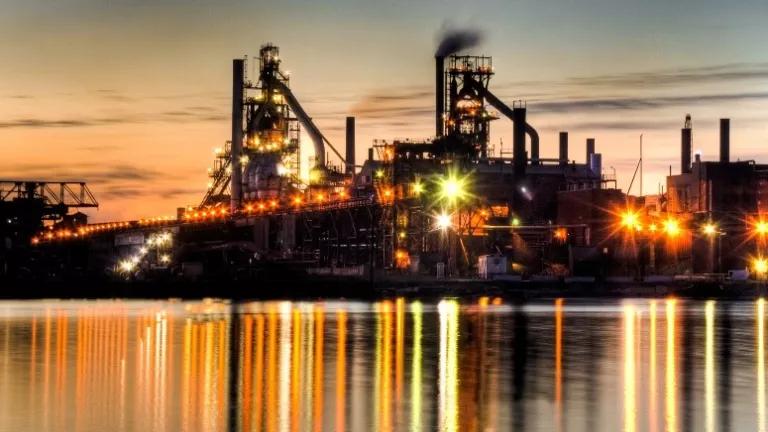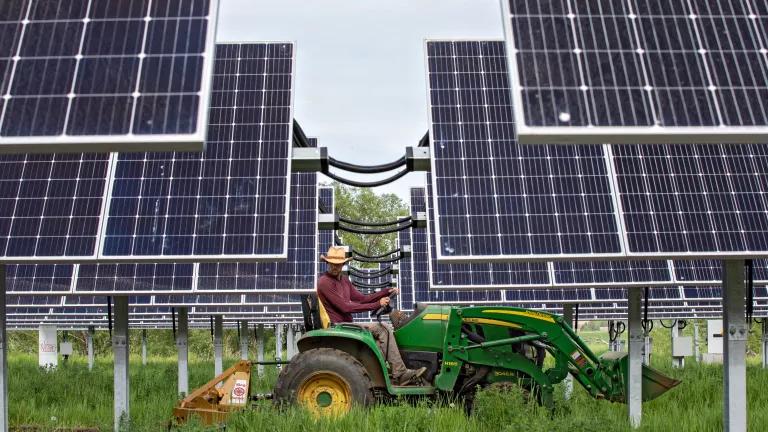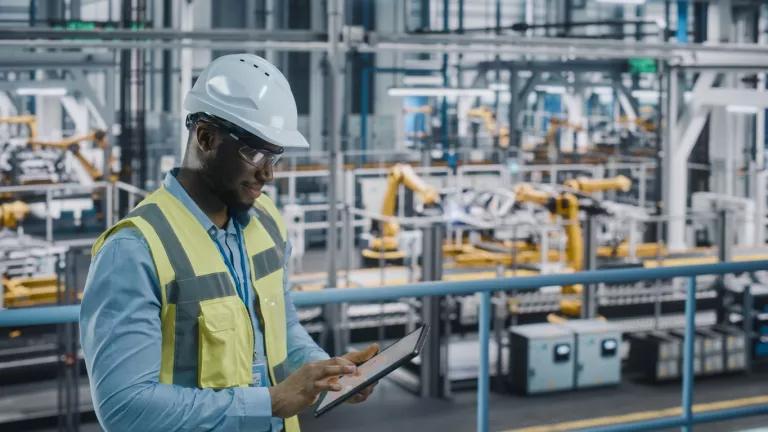The Hard Work of Industrial Decarbonization Begins Now
This year marked an inflection point in tackling the challenge of industrial decarbonization, with policymakers at multiple levels finally moving to adopt the policies we need.

Part of NRDC’s Year-End Series Reviewing 2022 Climate & Clean Energy Developments
The U.S. industrial sector is responsible for 30% of our annual climate pollution and critical heavy industrial subsectors like cement, steel, and aluminum face unique hurdles to decarbonization, largely due to trade exposure as well as less familiarity with needed solutions. Consider that the 2022 State of Climate Action report identified the global steel sector as the sector most off track and in need of a U-turn to align with 1.5oC pathways. There is no one-size-fits-all technological or policy solution to getting GHG emissions out of the industrial sector; transformation will require a package of policies that can at once encourage far greater adoption of existing solutions; deliver necessary innovation; and get early commercial scale projects built featuring the advanced technologies necessary for deep decarbonization, as we describe in a new NRDC Issue Brief.
The good news is that this year marked an inflection point in tackling this challenge, with policymakers at multiple levels finally moving to adopt the policies we need to begin to put this critical sector on an emissions trajectory aligned with our international commitments and a safe climate future. These same policies will also ensure U.S. industrial manufacturers remain globally competitive in a carbon constrained world.
Here’s some highlights of what we saw happen in 2022 across these key policy elements:
Federal investments
Action to decarbonize industrial manufacturing has been critical to meeting the Biden Administration’s climate goals from the start. Now, that aspiration is buoyed by billions in funding from Congress passed as part of the history Inflation Reduction Act (IRA). Notably, this includes $5.8 billion for the Advanced Industrial Facilities Deployment Program aimed at deep decarbonization of the U.S. industrial decarbonization base. As we and our partners discussed in this letter to the Department of Energy, which is charged with program implementation, there are lots of programs and measures elsewhere in the IRA to fund incremental emissions reductions, but this program is one of our best chances to swing big on investing in and deploying game-changing technologies in critical sectors like steel and cement. This includes, but is not limited to, direct reduction of iron (for steel making) with clean hydrogen (H2-DRI); electrified and other non-combustion heat sourced kilns for calcination in cement manufacturing, as well as as carbon capture and storage in the cement sector; and electrified steam crackers in the chemicals sector.
As we discuss here, this funding, together with other major tax credits and incentives for advanced manufacturing and low-carbon technology adoption in the IRA, and coupled with the Infrastructure Investment and Jobs Act, enacted in 2021, spell a game-change for industrial decarbonization. For the first time, these laws set the table for advanced technology investments to become financially accessible in highly emissive yet vital sectors like cement and steel.
State incentives and standards
On top of federal action, leading states are setting policies to directly tackle industrial emissions. One leadership state, California, passed a groundbreaking cement decarbonization law this year, which requires the state to achieve net-zero carbon emissions for cement used in the state by 2045 – the first of its kind. The California Air Resources Board (CARB) is now hard at work to develop credible pathways for meeting this ambitious target, which my colleague describes here. The agency’s work has the potential to produce not only a model policy that can be replicated in other jurisdictions but also early commercial scale decarbonization projects that help lower barriers to wider adoption of critical advanced technologies, such as industrial carbon capture technologies, across the United States and globally.
Other states, like New York and New Jersey are leading the way on adopting incentives for cleaner industrial materials this year. As of publication, New Jersey is on the precipice of passing a first-of-its-kind law on low carbon concrete procurement policy modeled on a policy design guide published by NRDC earlier this year. If passed, the law would set a climate performance standard for concrete that’s procured for state-funded projects and pair it with an incentive that rewards outstanding suppliers that adopt innovations that further drive down emissions.
In 2023, we will be looking for more climate leadership states to adopt policies that tackle industrial sector emissions, including both manufacturing and procurement incentives for clean industrial materials.
Demand pull for market transformation – federal, state, and corporate
Incentive programs aimed at industrial decarbonization cannot focus only on the upfront capital costs and transformation of the plants themselves; it’s essential they also consider the ongoing economics and building market demand for their outputs. This market pull is part of what will determine whether these are one-offs, or whether they catalyze broader market transformation.
In 2022, the Biden administration took major steps forward on a federal Buy Clean policy that would set minimum climate performance standards for federal procurement of materials widely used in publicly-funded building and transportation infrastructure projects: concrete, steel, asphalt, and flat glass. Because the federal government is such a massive purchaser of these materials, this policy could provide a big and early demand signal for decarbonized industrial products, and will have the greatest impact when paired with direct public investments in helping industrial facilities slash their climate emissions.
Demand for clean industrial materials will also need to come not just from public sector buyers but also from major buyers in the corporate sector. Early action by the First Movers Coalition is another important step forward, with major U.S. corporate purchasers of steel like Ford Motor Company joining the initiative in 2022 and committing in advance to purchase at least 10% of their annual steel by 2030 from zero- or near-zero emission suppliers.
In 2023 and beyond, both public and private sector buyers will need to move beyond purchasing incrementally cleaner products to making advanced purchasing commitments for breakthrough innovation, where possible – for example zero emission steel or cement – much like the advanced commitments made to buy life-saving vaccines against COVID-19.
Industrial materials like cement, steel, and aluminum are foundational to modern life and have few, if any, viable substitutes. Our societies will continue to rely on them for decades to come for everything from critical infrastructure like roads, schools, hospitals, and clean water to building wind turbines, solar panels, and electric vehicles to provide electricity and mobility in a clean economy. To meet our climate goals, we’ll need to create and deploy innovative technologies that in many cases fundamentally transform the ways in which these industrial products are made to align them with a clean future. Alongside deploying the solutions we have to day, such as energy efficiency and industrial heat pumps, success in this decade will require demonstrating commercial viability for these emerging technologies; lowering barriers to their adoption, such as permitting and financing; building first- through third-of-a-kind projects; and ensuring that policies are in place to drive technological deployment at scale by midcentury.
The United States is now poised to bring to bear a potent mix of policies to meet this challenge. Together, these three policy elements can support the wide deployment of existing solutions like energy and materials efficiency in the industrial sector, and, critically, begin commercializing the advanced technologies necessary for deeper decarbonization, including getting early, first-of-a-kind projects built in target states. In doing so, we will lay critical groundwork for federal emissions standards and/or other climate policies that help lock in solutions sector-wide.



